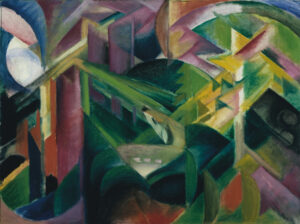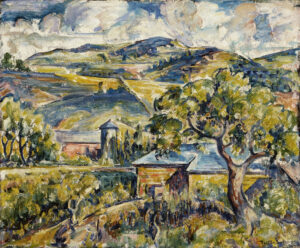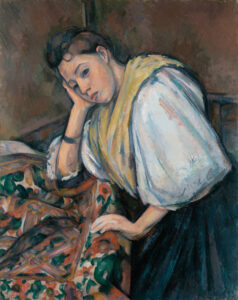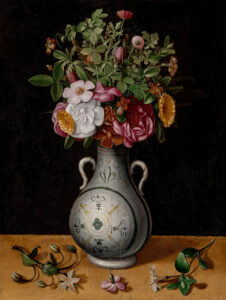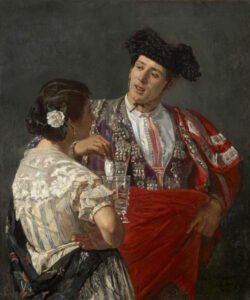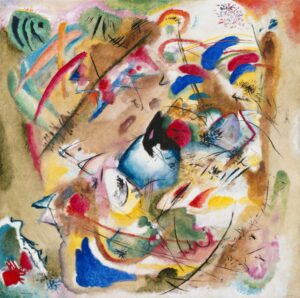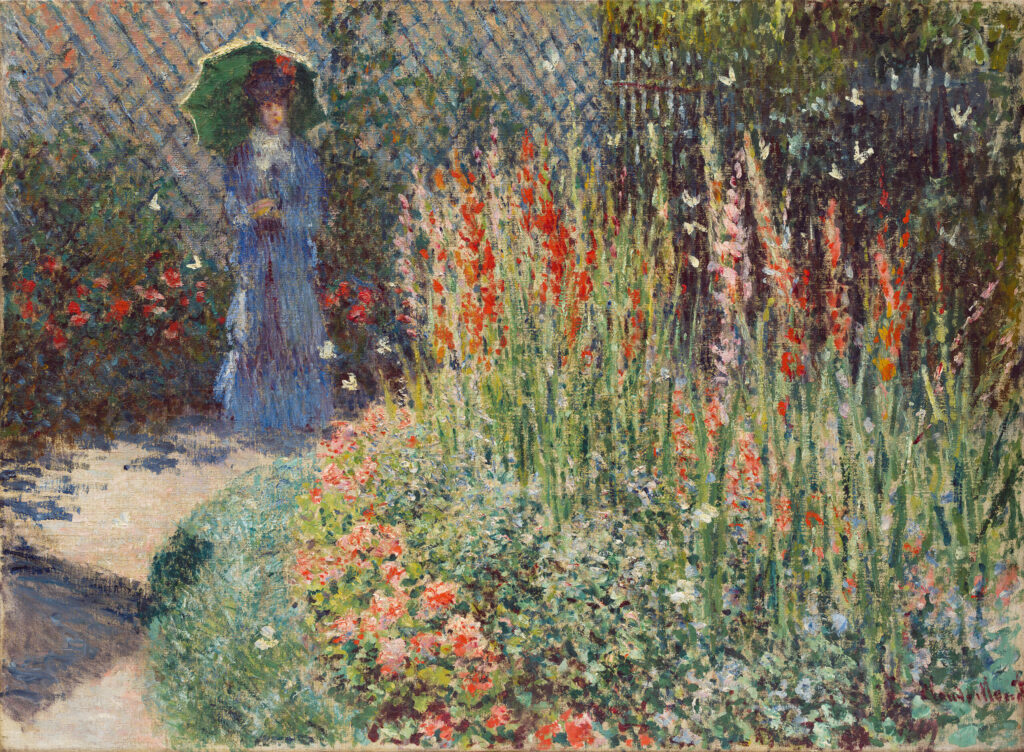
This work reveals Monet’s consummate art in his representation of the Argenteuil garden, transformed into a true laboratory of Impressionist light.
The gladiolus bed constitutes the true protagonist of this composition, deploying its floral spikes in a chromatic profusion dominated by vermillion reds and tender pinks. The artist employs a technique of divided touches, applied through successive impastos that create a vibrant pictorial surface. This revolutionary method allows colors to blend optically in the viewer’s eye rather than on the palette. The female figure, identified as Camille Doncieux, the painter’s wife, appears as a discreet counterpoint under her green parasol. Far from constituting the main subject, she functions as a spatial and chromatic reference point. The ensemble testifies to this perceptual revolution specific to Impressionism: capturing the fleeting effects of natural light on colored surfaces.
Further information
- Rounded Flower Bed, by Claude Monet, 1876
- 23 3/8 x 32 in. (59.3 x 81.3 cm)
- Detroit Institute of Arts, Modern Gallery, Level 2, Central Wing
- https://dia.org/collection/rounded-flower-bed-corbeille-de-fleurs-54805
A tutelary figure of French Impressionism, Claude Monet (1840-1926) transformed landscape painting by privileging direct observation of nature and the study of light variations. Born in Le Havre, he met Eugène Boudin who initiated him into plein air painting, a practice that would become the foundation of his aesthetic. Settled in Argenteuil between 1871 and 1878, he transformed his garden into an experimental laboratory where he tirelessly explored chromatic effects according to hours and seasons. As much theorist as practitioner, Monet actively participated in Impressionist exhibitions from 1874, defending with his colleagues Renoir, Pissarro, and Caillebotte a new conception of pictorial art.

